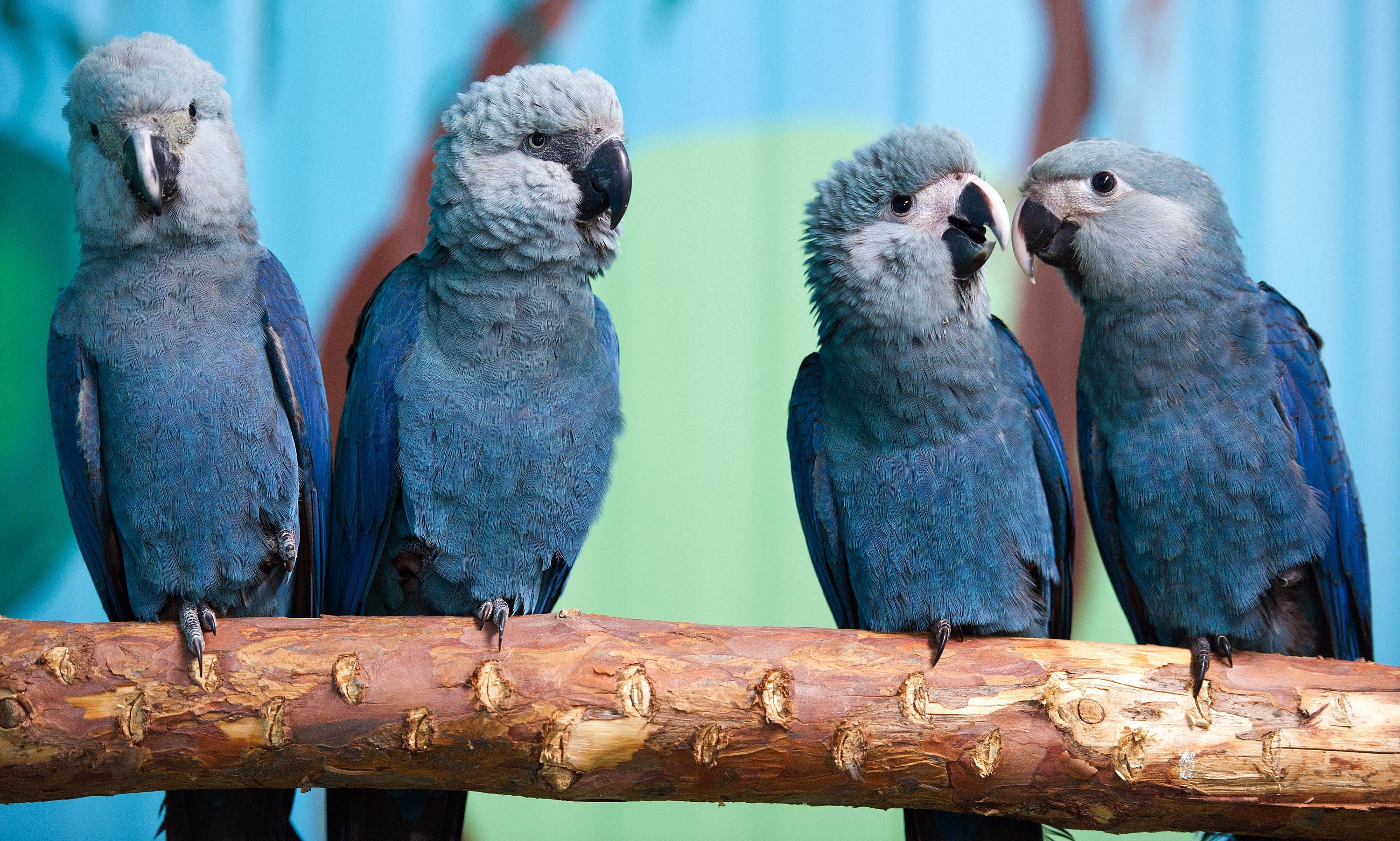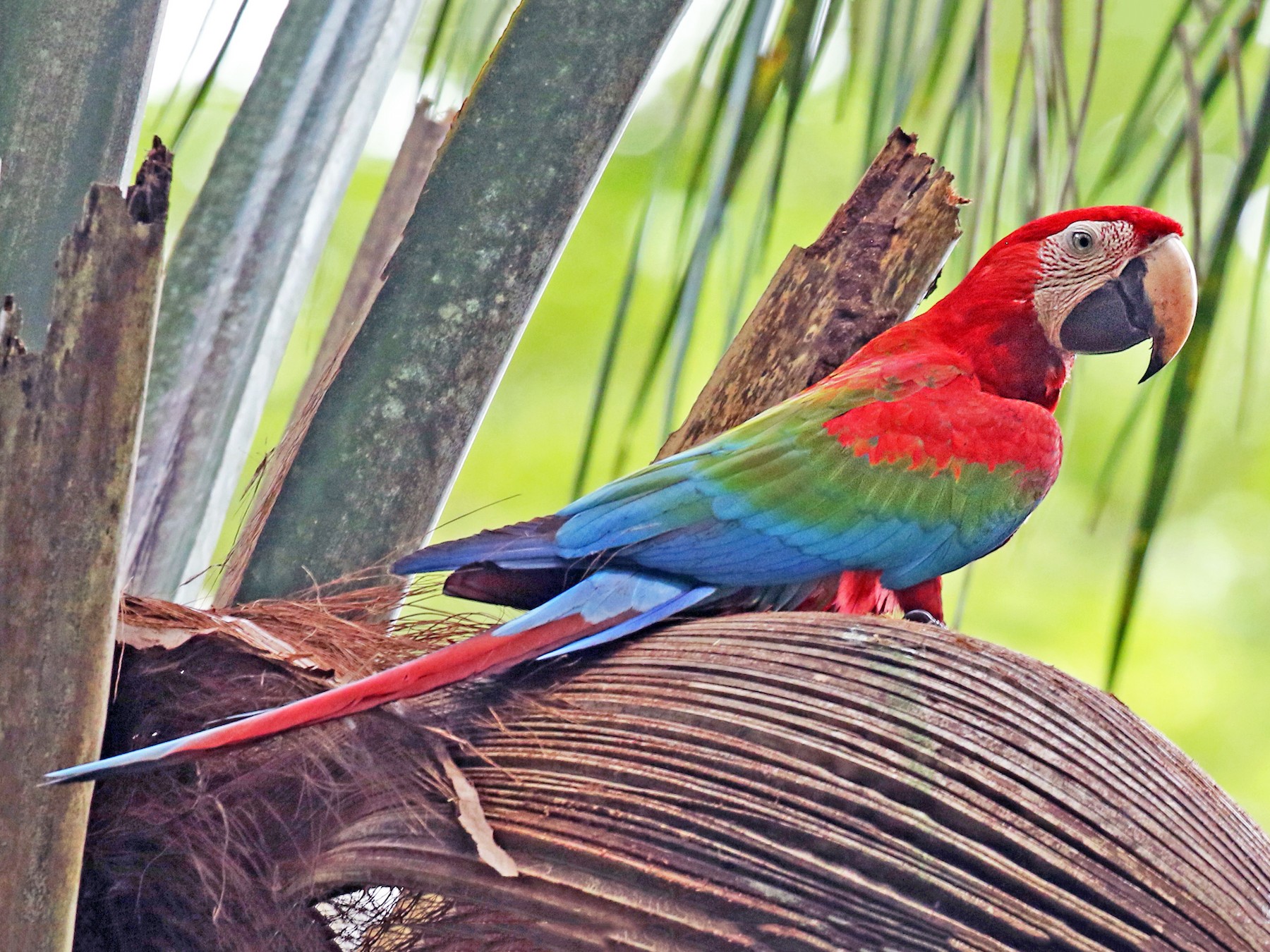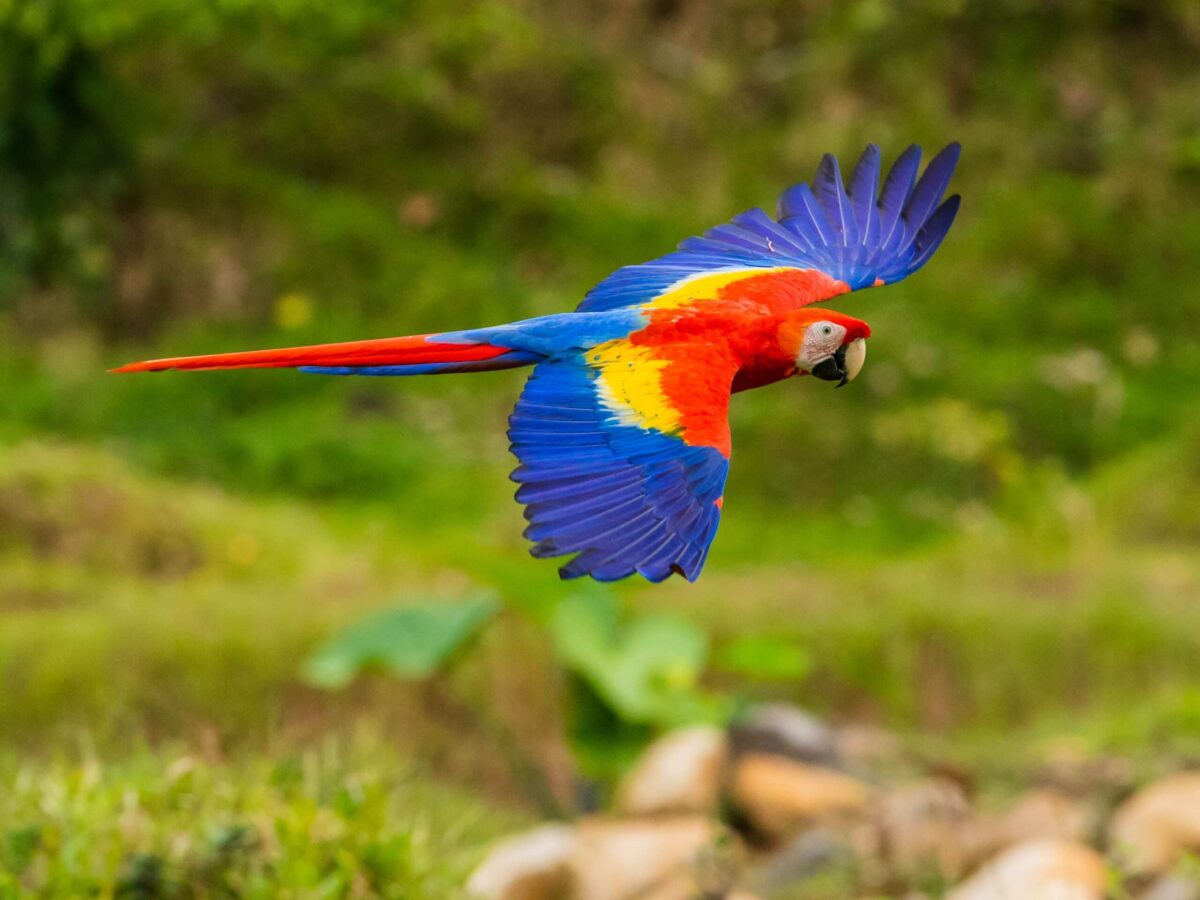The Rio movie is a heartwarming tale about Blu, a Spix’s macaw, that sets off on an adventure to Rio de Janeiro to mate and save his species. Blu and Jewel, the main characters of this animated movie, are Spix’s Macaws, an endangered species native to Brazil. The movie features several types of birds, including macaws, toucans, and a golden conure.
In this article, we will take a closer look at the types of birds in the Rio movie.
You are reading: A Look At The Types Of Birds In The Rio Movie

A Look At The 7 Types Of Birds In The Rio Movie
Spix’s Macaw
The Spix’s Macaw is a species of parrot that is native to Brazil. It is a medium-sized bird with various shades of blue plumage.
The Spix’s Macaw is famous for its appearance in the 2011 animated movie “Rio” as the main character, Blu, who is on a mission to save his species from extinction. Unfortunately, the Spix’s Macaw is now extinct in the wild due to deforestation and habitat loss.
However, there is still hope for the species as conservation efforts are underway to reintroduce the bird into its natural habitat.
In the movie, Blu and Jewel are the last pair of Spix’s Macaws in the world. The movie even references their extinct-in-the-wild status and at one point, an ornithologist mentions the species’ scientific name.
Red-and-green Macaw

The Red-and-green Macaw, also known as the Greenwing Macaw, is a large, mostly red macaw of the Ara genus. In the Rio movie, the Red-and-green Macaw is not a main character, but it is seen in a few dance sequences.
The Red Macaw Tribe, a group of Green Winged Macaws and Scarlet Macaws, is featured in Rio 2, and Felipe, the leader of the tribe, is a Scarlet Macaw.
The Red-and-green Macaw is native to South America and is found in countries such as Brazil, Bolivia, and Paraguay. These birds are known for their striking appearance, with predominantly red plumage and green wings. They are also known for their intelligence and social nature, making them popular pets.
However, the Red-and-green Macaw is listed as a species of Least Concern by the International Union for Conservation of Nature (IUCN).
Blue-and-gold Macaw
The Blue-and-gold Macaw, also known as the Blue-and-yellow Macaw, is a large South American parrot that is native to tropical South America.
Read more : Bird Feeders That Don T Make A Mess
These birds are known for their striking appearance, with a mostly blue dorsum, light yellow/orange venter, and gradient hues of green on top of their head. They have a green strip of feathers just above their black beak, and a partially naked face that will blush pink when they are excited.
Their feet are dark gray or black, and they have a black “beard” of feathers just below their beak. Blue-and-gold Macaws are monogamous and mate for life. They are also known for their intelligence, willingness to learn, and talking ability.
In the Rio movie, the Blue-and-gold Macaw is not a main character, but it is seen in the background of some scenes. These birds are commonly found in the pet trade and can live up to 30-45 years in captivity.
Scarlet Macaw

The Scarlet Macaw (Ara macao) is a large, brightly colored Neotropical parrot native to humid evergreen forests of the Americas. Its range extends from southeastern Mexico to Peru, Ecuador, Colombia, Bolivia, Venezuela, and Brazil in lowlands of 500 m (1,600 ft) up to 1,000 m (3,300 ft).
Scarlet Macaws are known for their striking appearance, with predominantly scarlet plumage on their head and shoulders, yellow on their back and mid-wing feathers, and blue on the wing tips and tail feathers. They have a short white face, light yellow-colored eyes, and a long, thick beak that is light on the top and dark black on the bottom.
Scarlet Macaws are highly intelligent and filled with personality, but they require a lot of attention and interaction from their owners.
In the Rio movie, the Scarlet Macaw is not a main character, but it is featured as part of the Red Macaw Tribe in Rio 2. Scarlet Macaws are important seed predators of large tree fruits in the ecosystems in which they live and may influence the generation of forest tree species.
Toco Toucan
The Toco Toucan (Ramphastos toco) is the largest and most well-known species in the toucan family. It is found in semi-open habitats throughout a large part of central and eastern South America, including northern and eastern Bolivia, extreme southeastern Peru, northern Argentina, eastern and central Paraguay, and eastern and southern Brazil.
The Toco Toucan has a mainly black body, a white throat, chest, and upper tail-coverts, and red undertail-coverts. It has a blue iris, which is actually thin blue skin around the eye, surrounded by another ring of bare, orange skin.
The most noticeable feature of this bird is its huge bill, which measures up to 23 cm (9 in) in length. The Toco Toucan is a non-forest bird and can be found in a wide range of semi-open habitats such as woodland, savanna, and other open habitats with scattered trees, Cerrado, plantations, forest-edge, and even wooded gardens. In the Rio movie, the Toco
Toucan is not a main character, but it is seen in the background of some scenes. Toco Toucans are popular in the pet trade due to their brightly colored bill and keen intelligence.
However, the population is suspected to be in decline due to hunting pressure and taking of young as pets.
Keel-billed Toucan
Read more : Can Baby Birds Eat Strawberries?
In the Rio movie, the Keel-billed Toucan is featured as a minor character. Eva, Rafael’s wife, is a Keel-billed Toucan. She is the mother of their 21 chicks. Additionally, a group of Keel-billed Toucans is seen swinging on ropes hanging from the trees at the end of the movie during “Real in Rio”.
The Keel-billed Toucan is a colorful bird with a black body, a yellow neck, and a green back. Its most distinctive feature is its large, multi-colored bill, which is green at the base, yellow at the tip, and has red, orange, and blue markings in between.
The Keel-billed Toucan is native to Central and South America and is found in tropical forests from southern Mexico to Venezuela and Colombia.
These birds are known for their playful and social nature, making them popular pets. However, they are also hunted for their feathers and meat, and their habitat is threatened by deforestation.
Golden Conure
The Golden Conure is a species of parrot that is native to the Amazon basin of Northern Brazil. In the Rio movie, the Golden Conure is a minor character, with three baby conures and their mother appearing in the beginning of the movie.
The Golden Conure is a small parrot, measuring about 13 inches long. Its plumage is mostly bright yellow, hence its common name, but it also possesses green remiges. It has a large gray beak, and its eyes are surrounded by a patch of bare white skin.
The Golden Conure is known for its beauty and elegance, making it a popular pet. However, the species is threatened by habitat loss and the pet trade, and it is listed as endangered by the International Union for Conservation of Nature (IUCN).
FAQS
1. What types of birds are featured in the Rio movie?
The Rio movie features several types of birds, including Spix’s Macaws, Red-and-green Macaws, Blue-and-gold Macaws, Scarlet Macaws, Toco Toucans, Keel-billed Toucans, and Golden Conures.
2. Is the Spix’s Macaw extinct?
Yes, the Spix’s Macaw is now extinct in the wild due to deforestation and habitat loss. However, conservation efforts are underway to reintroduce the bird into its natural habitat.
3. Are the birds in the Rio movie accurate representations of their real-life counterparts?
While the birds in the Rio movie are not entirely accurate representations of their real-life counterparts, they do share many similarities in terms of appearance and behavior.
4. Can the birds in the Rio movie be kept as pets?
Some of the birds featured in the Rio movie, such as the Keel-billed Toucan and Golden Conure, are popular pets. However, it is important to note that many of these birds are threatened by habitat loss and the pet trade, and it is illegal to own certain species without proper permits.
5. What is the significance of the birds in the Rio movie?
The birds in the Rio movie serve as important characters and symbols of the vibrant and diverse wildlife found in Brazil. They also highlight the importance of conservation efforts to protect endangered species and their habitats.
Source: https://petstutorial.com
Category: Birds










